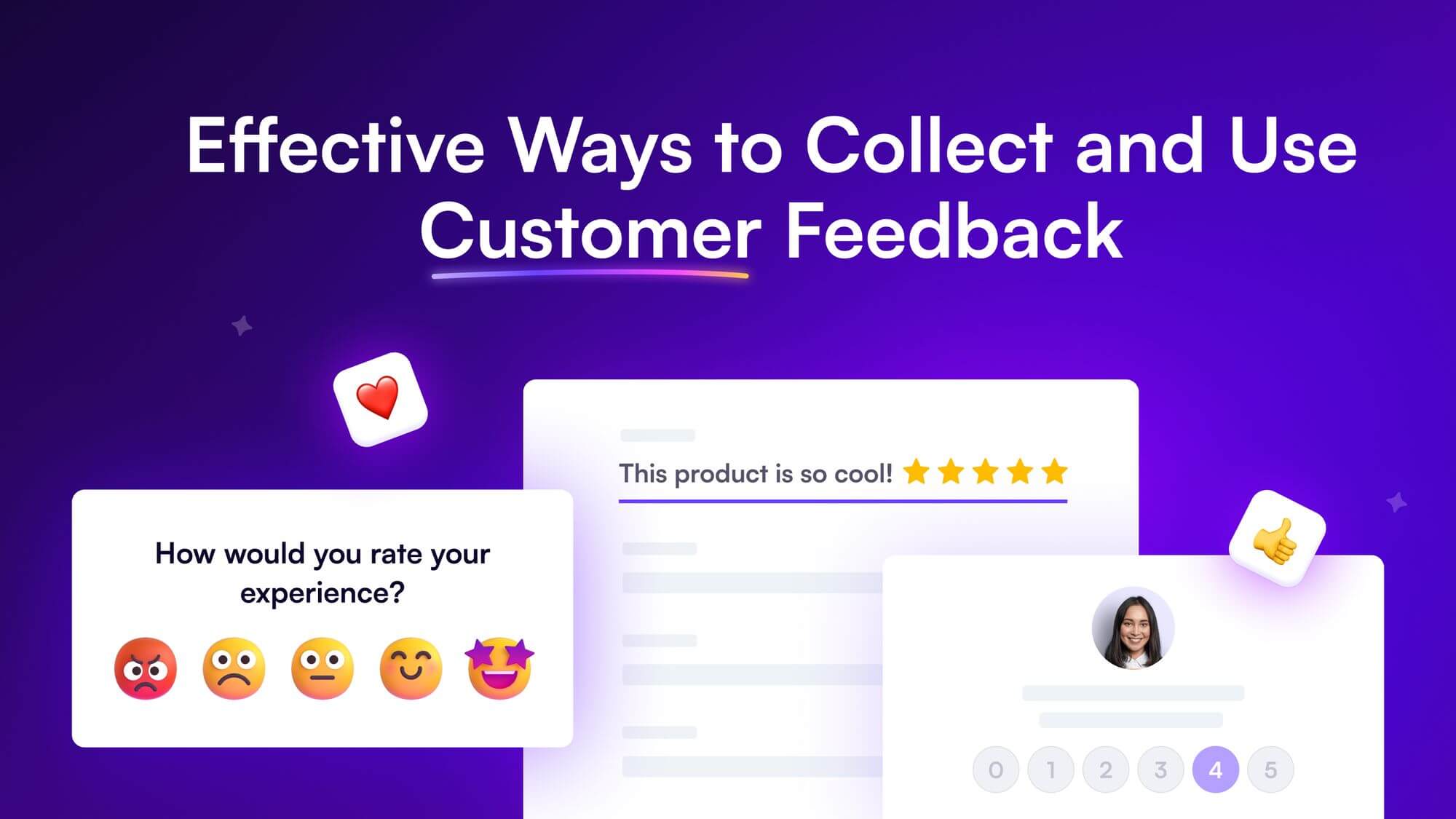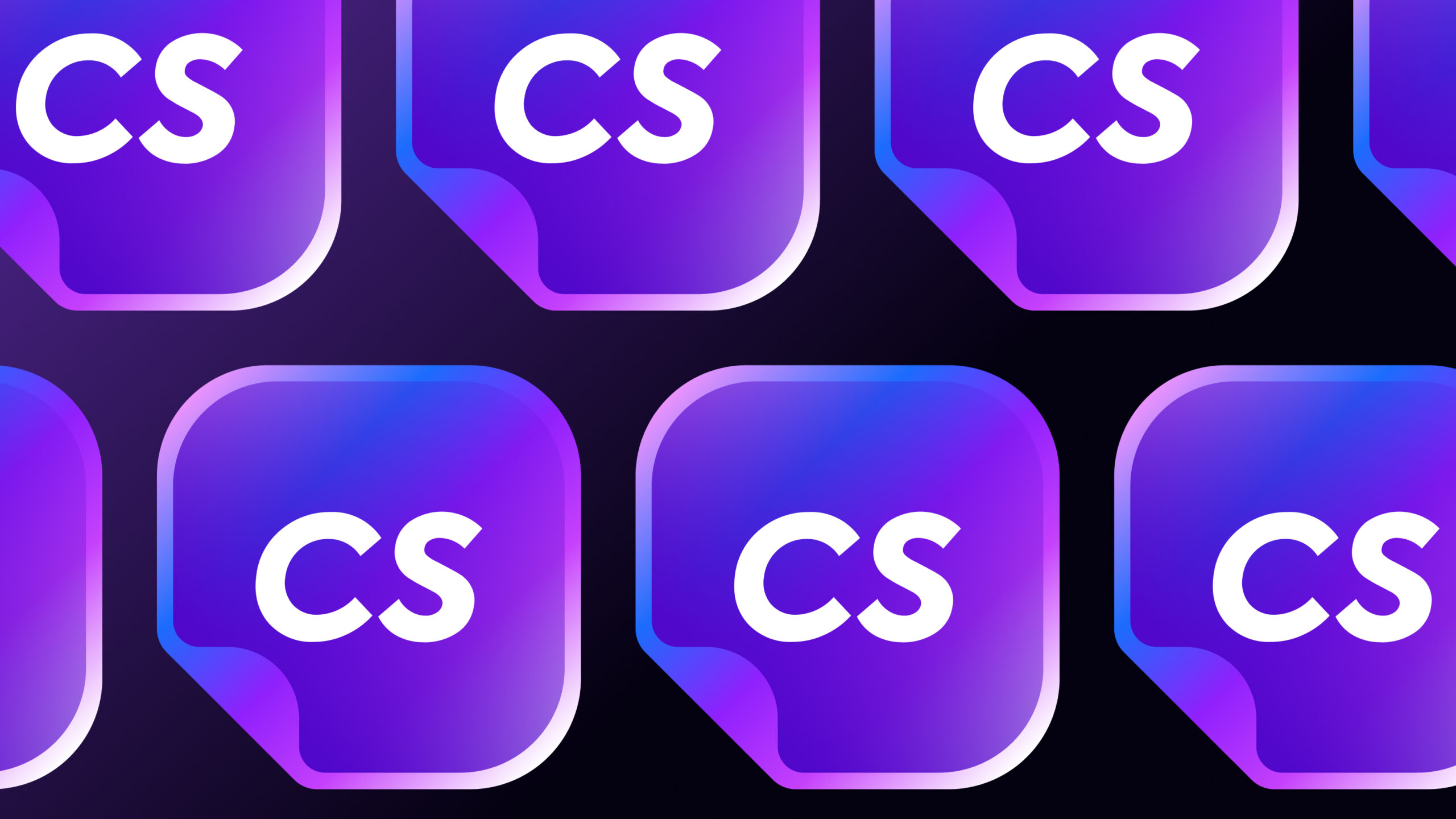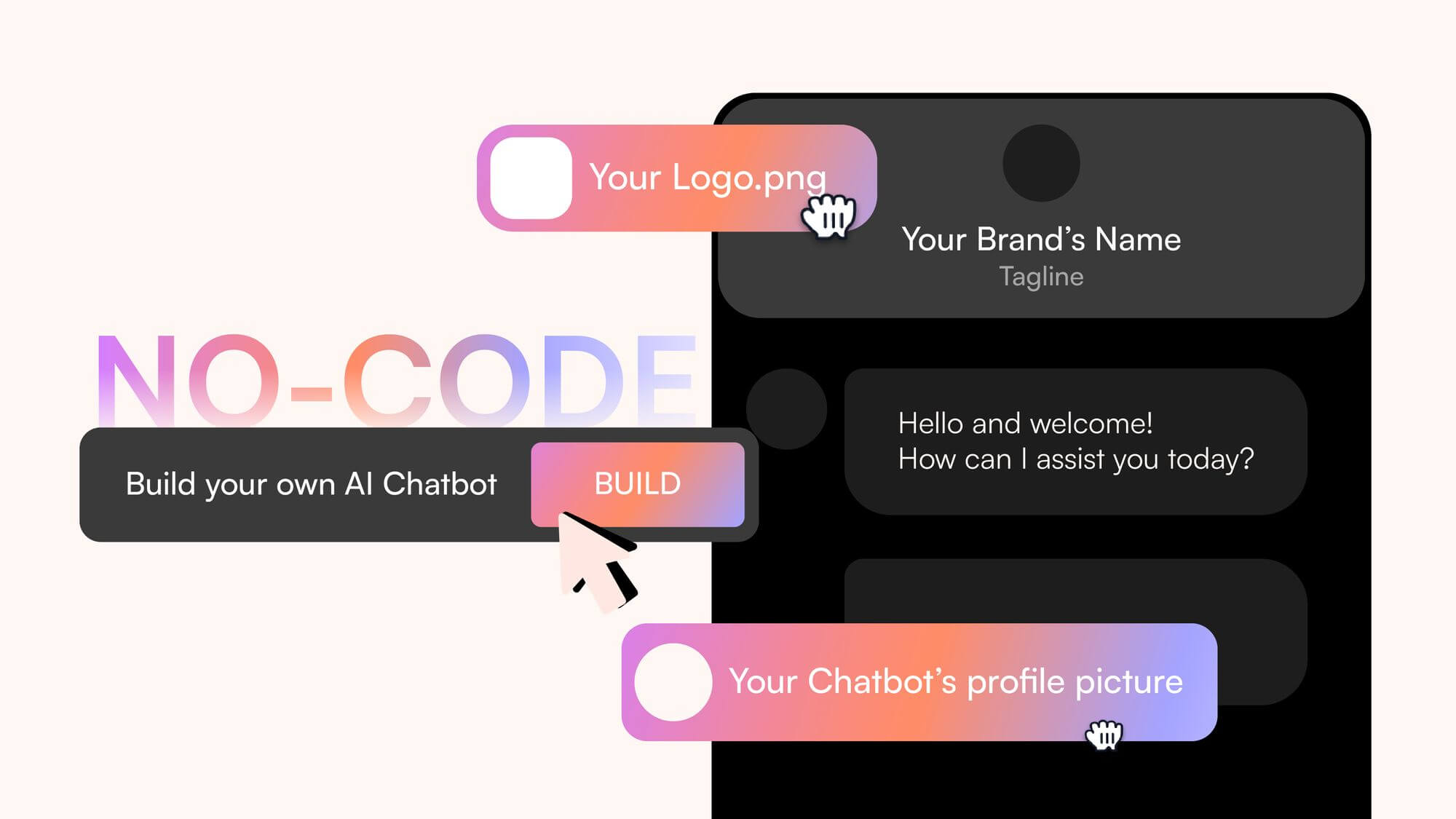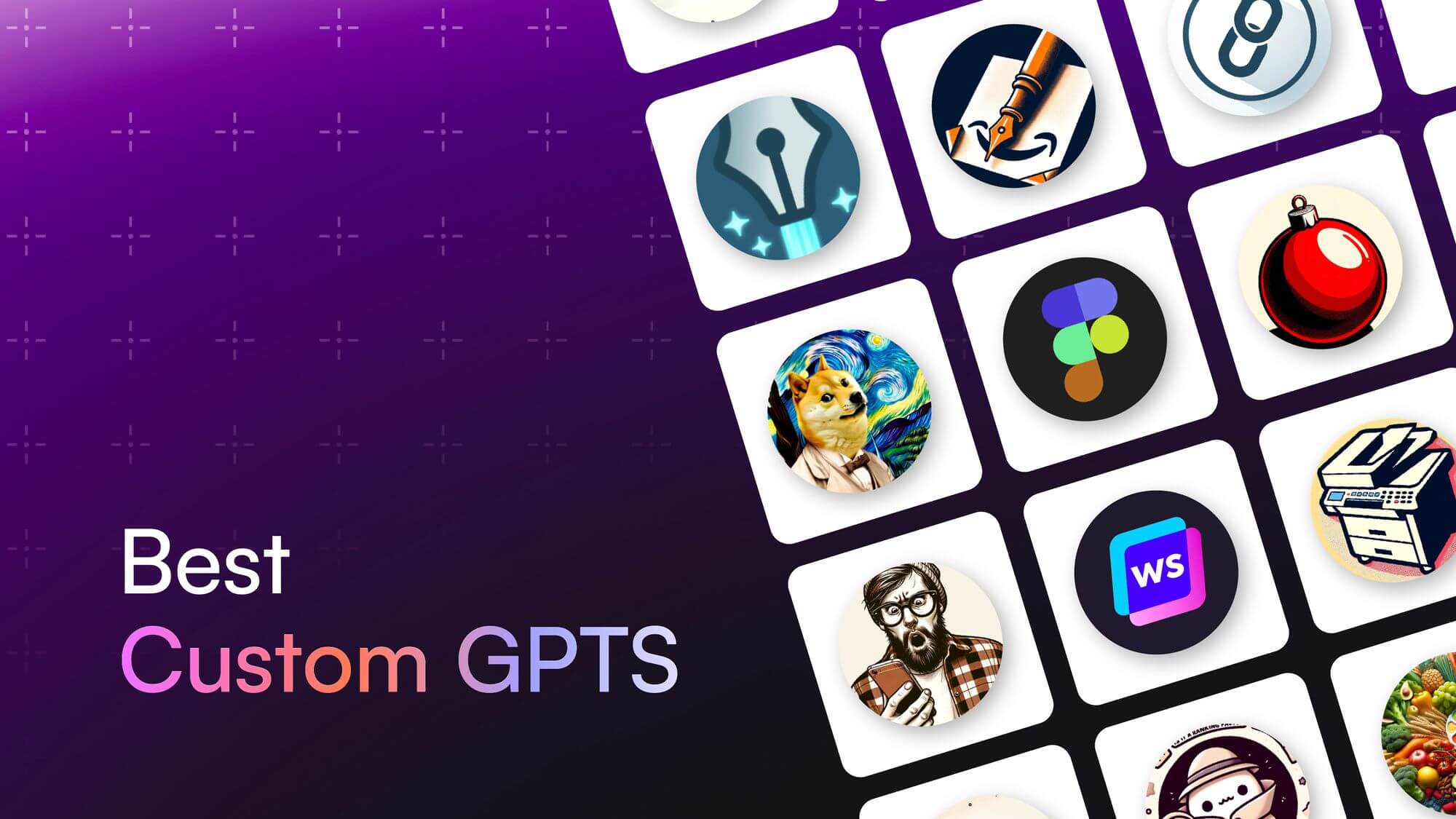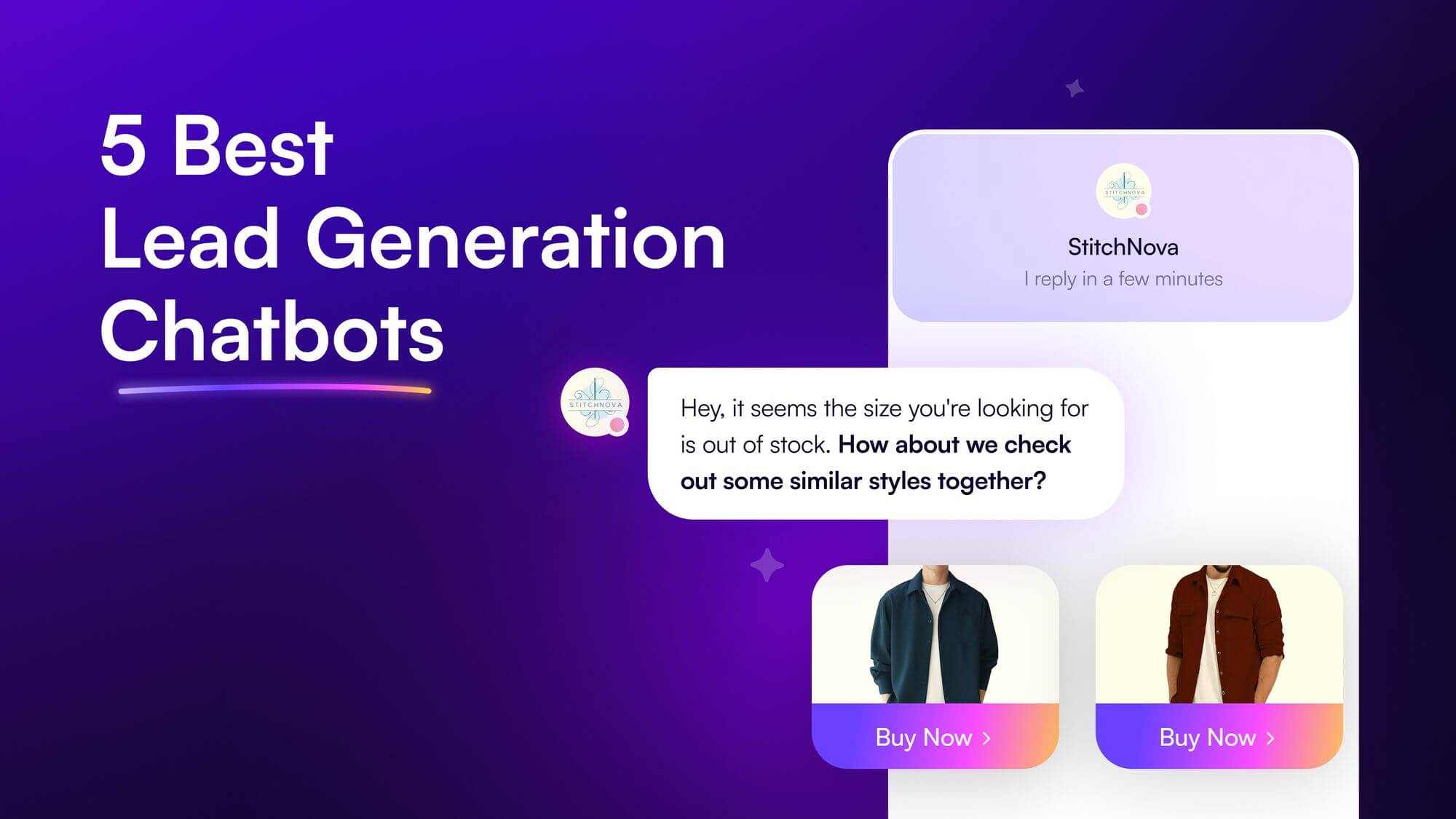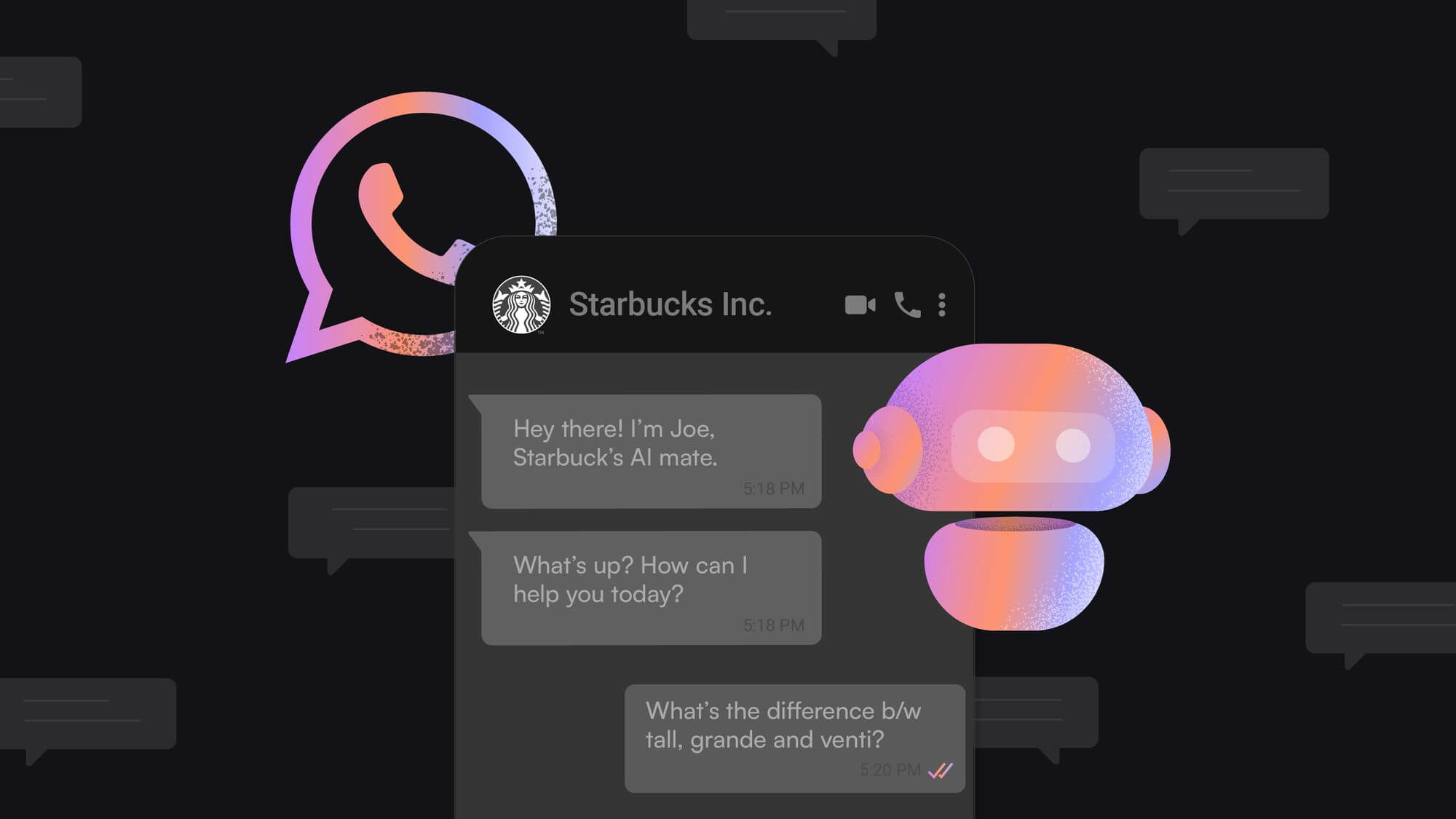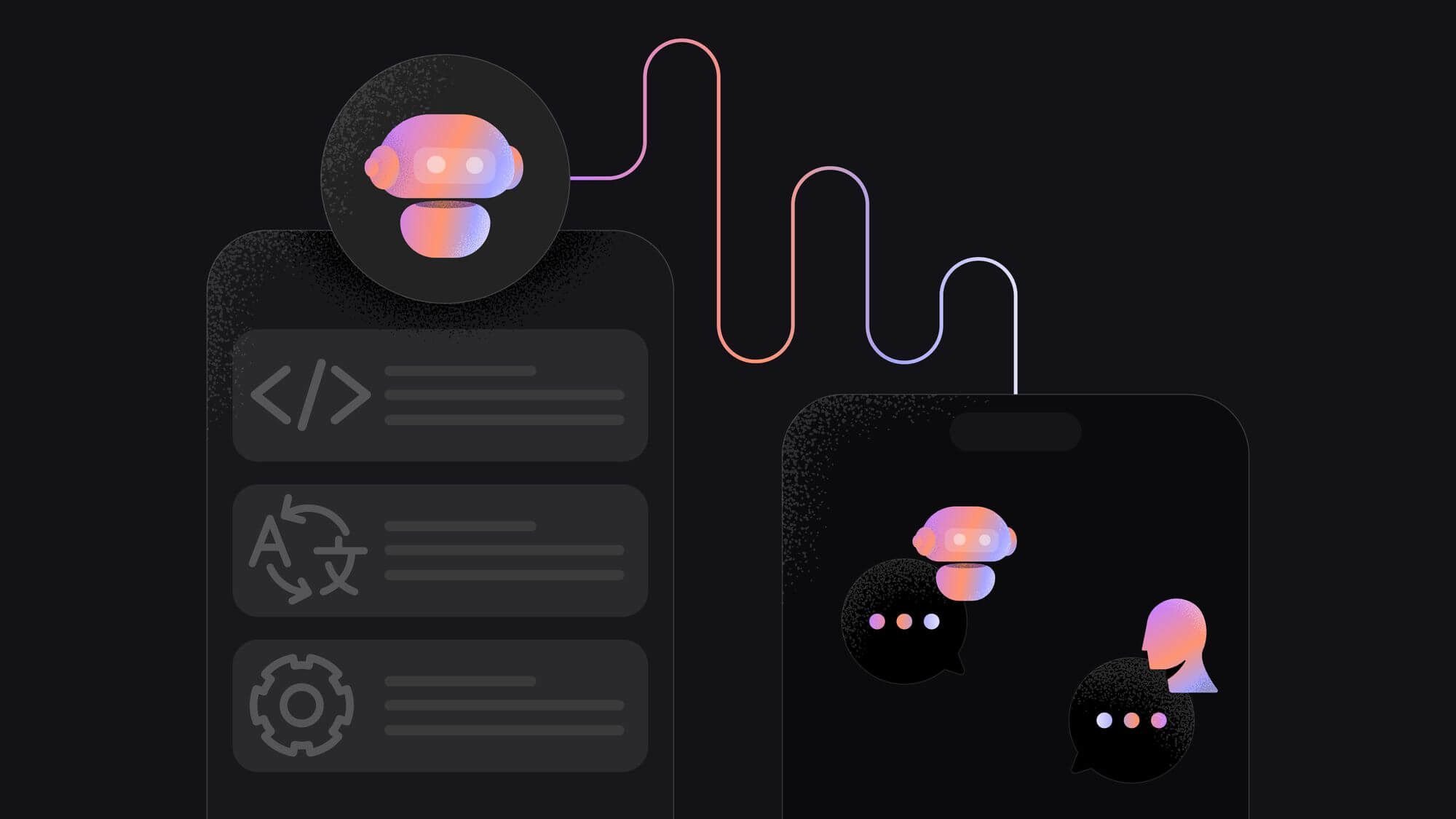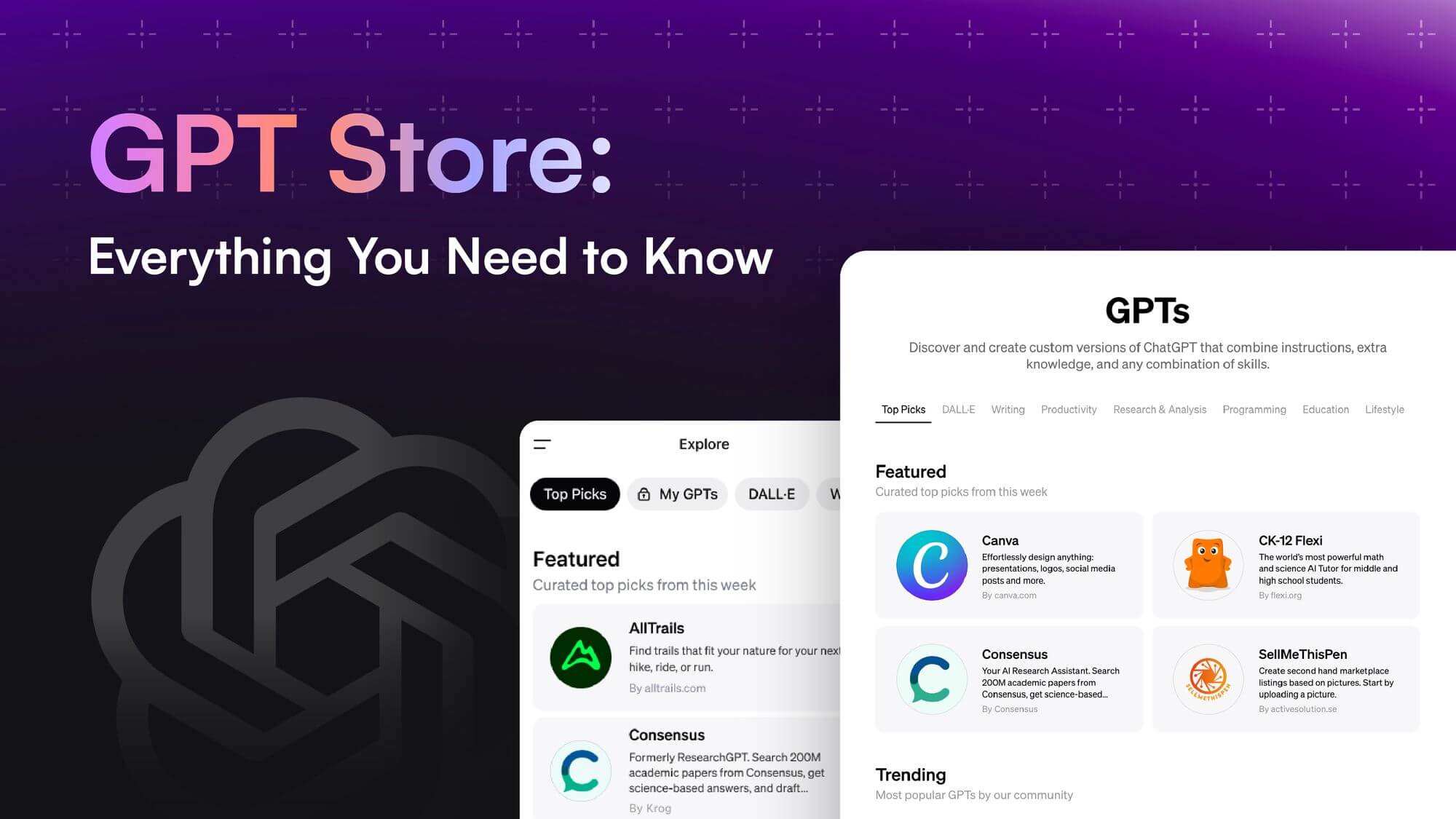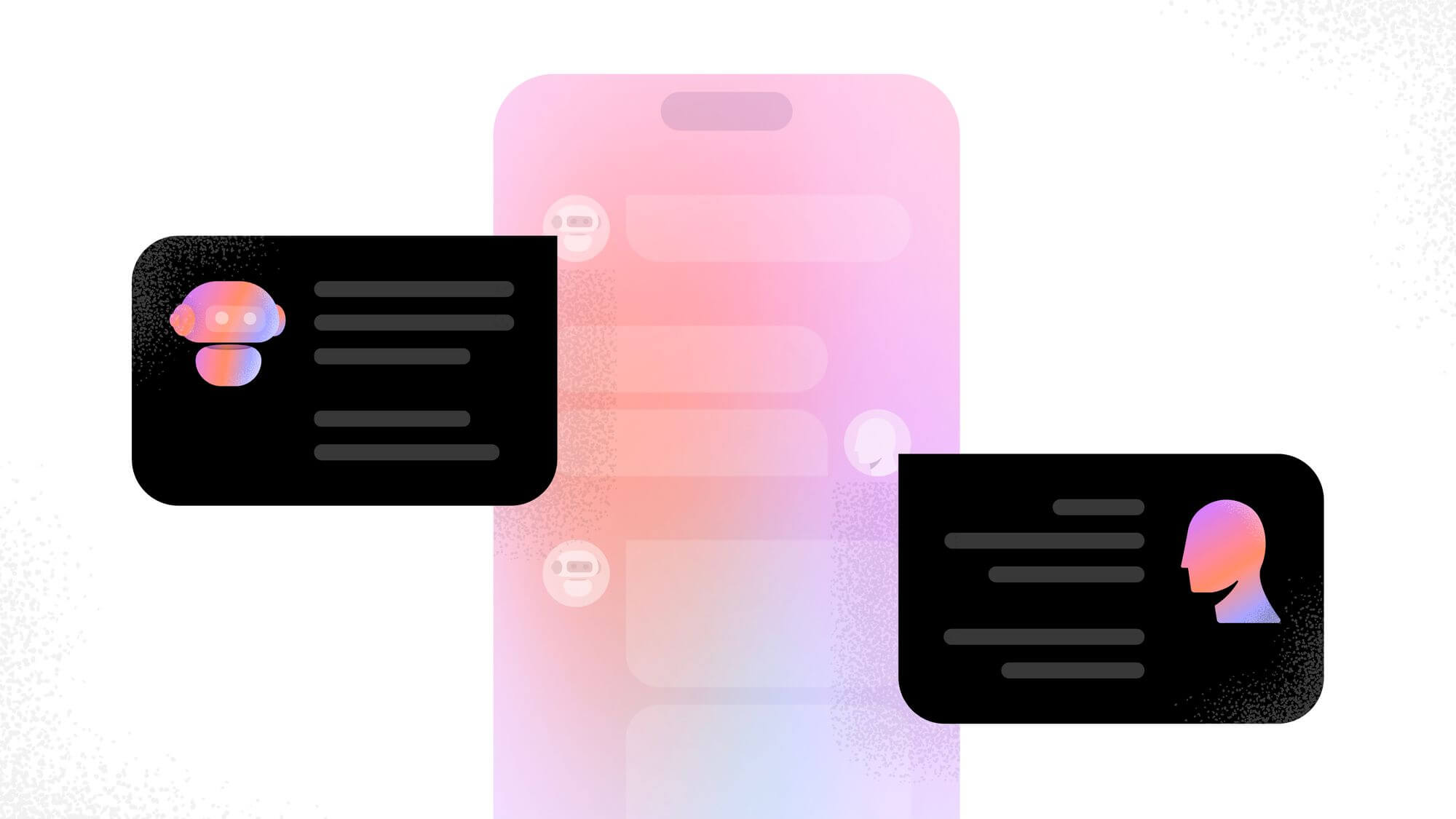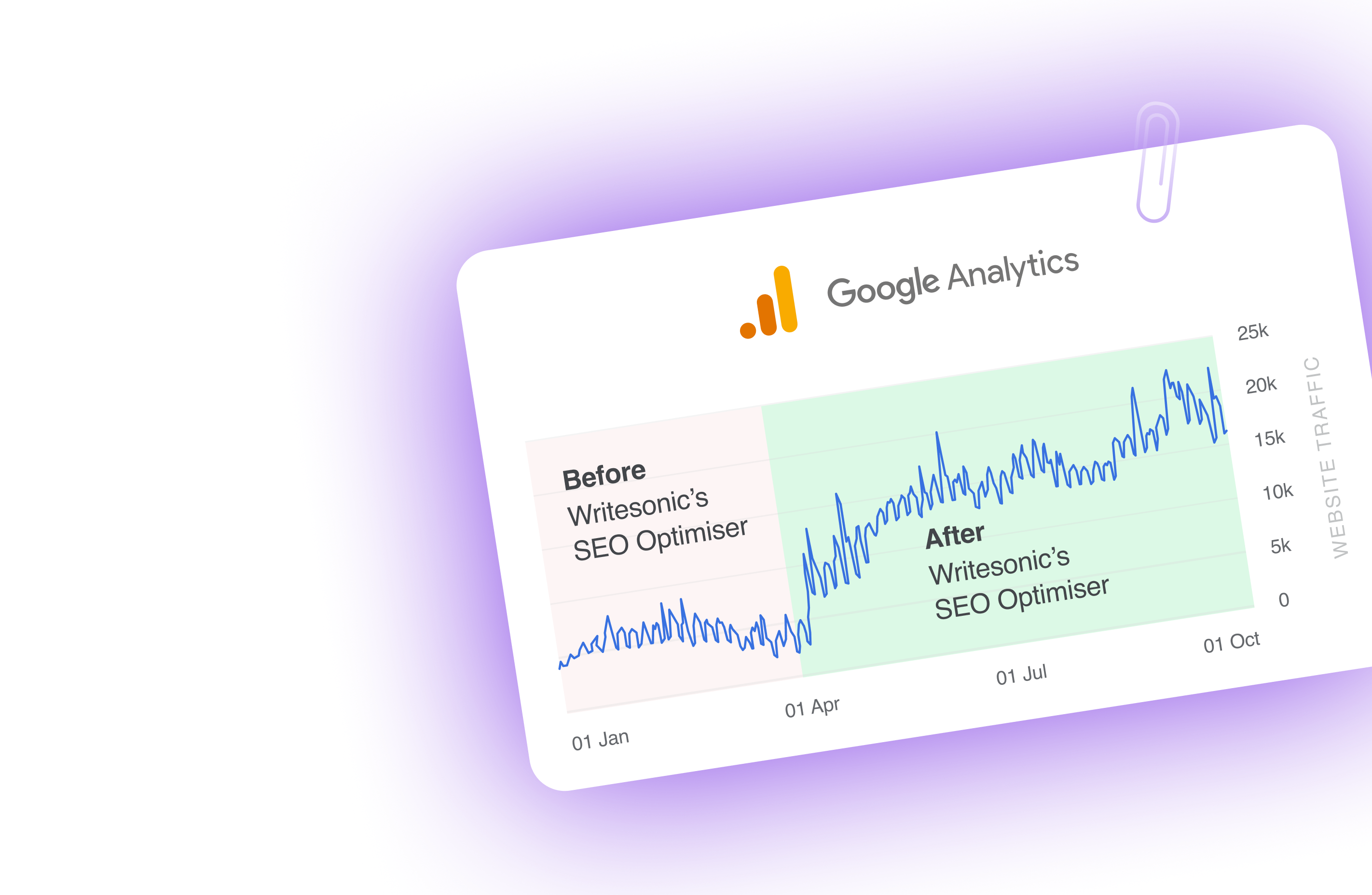As a business owner, you’ve worked tirelessly to create a remarkable product or service you’re proud of. However, it’s important to remember that understanding your customers’ pain points, preferences, and expectations is crucial to long-term success and customer loyalty.
The trust in online reviews is on par with personal recommendations for 88% of consumers. Collecting and incorporating customer feedback into your strategy can help you stay ahead of the curve, quickly adapting to changing market trends and consumer needs.
Customer feedback is a powerful tool for measuring customer satisfaction and identifying areas for improvement. It also enables you to initiate meaningful conversations with dissatisfied customers, potentially winning them back and increasing their loyalty.
Using customer feedback software and survey templates, you can gather valuable insights that will guide your product development, enhance the customer journey, and ultimately lead to higher customer retention rates.
What is customer feedback?
Customer feedback is the valuable information, insights, and opinions your customers share about their experiences with your products, services, or brand. It’s a direct line of communication between you and your target audience, allowing you better to understand their needs, preferences, and pain points.
Types of customer feedback
Customer feedback comes in various forms, offering unique insights into your customers’ experiences and expectations. By understanding the different types of feedback, you can better analyze and act upon the valuable information your customers provide. Let’s explore the main categories of customer feedback:
- Product Feedback
- Opinions on product features, functionality, and usability
- Suggestions for improvements or new features
- Comparisons with competitors’ products
2. Service Feedback
- Experiences with customer support, sales, or delivery
- Feedback on staff knowledge, friendliness, and responsiveness
- Opinions on the overall service quality and efficiency
- Perceptions of brand image, reputation, and values
- Emotional connections and loyalty to the brand
- Feedback on marketing campaigns and brand messaging
| Feedback Type | Positive | Negative | Constructive |
| Product | Praise for features or quality | Complaints about malfunctions or missing features | Suggestions for improvements or new features |
| Service | Compliments on staff helpfulness or quick resolution | Criticism of long wait times or unhelpful staff | Ideas for streamlining processes or enhancing service |
| Brand | Expressions of loyalty and emotional connection | Concerns about brand reputation or inconsistent messaging | Insights on how to strengthen brand image and values |
By categorizing customer feedback into these main types, you can better understand your strengths and weaknesses across different aspects of your business. This knowledge empowers you to make targeted improvements, ultimately enhancing customer satisfaction and loyalty.
Benefits of collecting customer feedback
Collecting and analyzing customer feedback offers numerous benefits, such as:
Product development
Product development is the process of bringing a new product or service to market. It involves identifying a market need, conducting research and development, conceptualizing and designing the product, developing a marketing strategy, and launching the product. This process can be iterative, involving multiple stages of prototyping, testing, and refinement to ensure the product meets customer needs and stands out in the market.
Customer experience
Customer experience (CX) refers to the total journey of a customer’s interactions with a brand, from the initial discovery and awareness stage through the purchasing process and post-purchase support. It encompasses every touchpoint between the customer and the company, including product quality, customer service, and the ease of use of digital platforms. A positive customer experience is crucial for customer satisfaction and retention.
Brand loyalty
Brand loyalty is the tendency of consumers to purchase one brand’s products over another continuously. Consumer behavior reflects preference and trust in the brand, often due to positive customer experiences, product quality, and emotional connections fostered by the brand through consistent messaging and values. Brand loyalty can lead to customer advocacy and long-term business success as loyal customers often provide repeat business and word-of-mouth promotion.
Competitive advantage
Competitive advantage is what makes an entity’s goods or services superior to all of a customer’s other choices. It is the factor that buyers look for when choosing between options in a competitive market. Competitive advantages can include cost structures, product offerings, distribution networks, and customer support. Companies strive to develop a sustainable competitive advantage that can be maintained over time to ensure continued success in their market.
By actively seeking out and leveraging customer feedback, you can make data-driven decisions that align with your customer’s expectations, ultimately driving growth and success for your business.
Why is customer feedback important?
Customer feedback is the lifeblood of any successful business, providing invaluable insights into your customers’ needs, preferences, and pain points. By actively listening to and incorporating customer feedback, you can drive product development and innovation, ensuring your offerings remain relevant and competitive in an ever-evolving market.
Moreover, customer feedback is crucial in enhancing customer experience and satisfaction. By addressing your customers’ concerns and implementing their suggestions, you demonstrate that you value their input and are committed to meeting their expectations. This, in turn, fosters a sense of loyalty and trust, as customers feel heard and appreciated.
A prime example of the power of customer feedback is a leading tech company that used it to improve its flagship product. The company gathered valuable insights into its customers’ pain points and feature requests through extensive surveys, user testing, and social media monitoring. By analyzing and incorporating this feedback into their product roadmap, they released a series of updates that significantly improved user experience and satisfaction. As a result, the company saw a notable increase in customer retention and advocacy, cementing its position as an industry leader.
Best practices in collecting customer feedback
To collect valuable customer feedback in an effective manner, it’s important to follow certain best practices that ensure the process is unbiased, streamlined, and customer-centric. When creating feedback forms, keep them simple and concise, and include open-ended questions that allow customers to express their thoughts freely. It’s crucial to remove any bias from the questions to gather authentic insights. Additionally, ensure that the forms are sent to the right users at the appropriate time, such as after specific touchpoints or periodically for overall opinions.
Establishing a well-defined feedback management process is key to success. This involves:
- Centralizing feedback data in one place for easy access and analysis
- Agreeing on a clear process for managing and acting on feedback
- Developing a product feedback policy that outlines how feedback will be handled and communicated to customers
Following these best practices can create a structured approach to collecting and using customer feedback. While collecting this data, remember that GDPR compliant surveys are essential to ensure data privacy while gathering customer feedback. By adhering to these regulations, businesses can build trust with their customers, knowing that their data is handled securely and responsibly.
Methods for collecting customer feedback
You can employ various effective methods tailored to your business needs to gather valuable customer feedback. Here are 11 proven techniques to collect customer insights:
1. Surveys and questionnaires
Customer feedback doesn’t need to be detailed and long, but it does need to be easy to complete. Present straightforward questions and boost the accessibility of your survey with these strategies:
- Color code questions and answers so they are distinguishable
- Use emoji answers when appropriate
- Ensure that email or landing page surveys are mobile-friendly
- Avoid unrelated questions or extraneous information
- Ensure the feedback form linked with the QR code works and doesn’t take users to 404 page
In addition to these strategies, consider taking a more interactive approach. For example, to discover whether a customer found one of your knowledge base articles helpful, ask them to click on a thumbs-up or thumbs-down icon.
Or, after a customer-chatbot conversation, use a pop-up survey asking the user to rate their experience with a smiling, neutral, or frowning face. You can also use a one—to five-star rating scale to get a general idea of what customers think of your product, service, or support experience.
Quick and easy methods encourage actionable feedback while requiring minimal effort on the customer’s end.
2. Feedback boxes
Customer feedback doesn’t need to be detailed and long, but it does need to be easy to provide. Implement user-friendly feedback forms on your website or app to easily capture real-time insights. Boost accessibility using these strategies:
- Place feedback boxes strategically, such as after key interactions or on high-traffic pages
- Keep feedback forms concise and straightforward, minimizing the number of required fields
- Use clear and simple language to explain the purpose of the feedback form
- Provide options for both quantitative (e.g., ratings) and qualitative feedback
Additionally, consider making feedback forms visually appealing and engaging to encourage participation. For example, use interactive elements like sliders or checkboxes to make the feedback process more interactive and enjoyable for users.
Creating user-friendly feedback boxes ensures that customers can easily share their thoughts and experiences, leading to valuable insights for improving products and services.
3. Social media listening
Customer feedback doesn’t need to be solicited directly; it can also be gleaned from social media channels. Monitor social media for mentions of your brand, products, or services to gather valuable insights. Enhance your social media listening strategy with these techniques:
- Use social media monitoring tools like Meltwater to track brand mentions, hashtags, and keywords related to your business
- Engage with customers who provide feedback, responding promptly and publicly to show appreciation for their input
- Analyze sentiment trends over time to identify patterns and areas for improvement
- Take note of both positive and negative feedback, using it to inform decision-making and improve customer satisfaction
By actively listening to what customers say on social media, businesses can gain valuable insights into customer sentiment, preferences, and pain points. This can ultimately improve their products and services to better meet customer needs.
4. User activity analysis
Understanding customer behavior on your website or app is key to gathering valuable feedback. Utilize website and app analytics to analyze user activity and identify areas for improvement. Enhance your user activity analysis with these strategies:
- Track key metrics such as bounce rates, time on page, and click-through rates to understand how users interact with your site or app
- Use heatmaps and session recordings to visualize user behavior and identify pain points in the user experience
- Segment users based on behavior patterns to tailor feedback collection strategies to different user groups
- Test changes to your website or app and measure their impact on user behavior and satisfaction
By analyzing user activity data, businesses can gain insights into how customers interact with their digital properties and make informed decisions to improve the user experience.
5. Customer interviews
While quantitative data provides valuable insights, qualitative data from customer interviews offers a deeper understanding. Conducting one-on-one customer interviews allows for in-depth exploration of their experiences and preferences. Optimize your customer interview process with these techniques:
- Prepare open-ended questions to encourage customers to share detailed feedback and insights
- Create a comfortable and welcoming environment for interviews to facilitate honest and candid responses
- Actively listen to customers’ responses and ask follow-up questions to delve deeper into specific topics
- Respect customers’ time and privacy, keeping interviews focused and confidential
By conducting customer interviews, businesses can gain nuanced insights into customer needs, preferences, and pain points, which can inform strategic decision-making and drive continuous improvement.
6. Comment cards
Traditional comment cards can be modernized for the digital age to streamline feedback collection. Adapt comment cards using QR codes or short URLs to effortlessly direct customers to online feedback forms. Enhance the effectiveness of comment cards with these approaches:
- Place comment cards strategically in physical locations where customers frequent, such as restaurant tables, hotel rooms, or retail stores
- Keep the feedback form simple and easy to access, ensuring a frictionless experience for customers
- Encourage customers to provide both positive feedback and constructive criticism, fostering a culture of open communication
- Regularly review and analyze feedback from comment cards to identify trends, address issues, and make improvements
By leveraging digital comment cards, businesses can gather valuable feedback from customers in real-time, enabling them to make informed decisions and enhance the overall customer experience.
7. Contact forms
Website contact forms are a valuable channel for collecting customer inquiries and feedback. Optimize contact forms to encourage customers to share their experiences and suggestions while seeking support or information. Improve the effectiveness of contact forms with these strategies:
- Include a dedicated feedback section within the contact form, making it easy for customers to provide input alongside their inquiries
- Clearly communicate the purpose of the feedback section and encourage customers to share their thoughts and suggestions openly
- Implement user-friendly design elements, such as clear labels and intuitive input fields, to enhance the usability of the contact form
- Regularly review and analyze feedback submitted through contact forms to identify recurring issues, address customer concerns, and improve overall satisfaction
By leveraging contact forms as a feedback collection tool, businesses can gather valuable insights from customers while also addressing their inquiries and concerns promptly, ultimately enhancing the customer experience.
8. Usability tests
Usability tests provide an opportunity to gather feedback on product or service functionality and user experience directly from customers. Engage customers in usability tests to gain valuable insights and suggestions for improvement. Maximize the effectiveness of usability tests with these techniques:
- Recruit participants who represent the target audience and have diverse backgrounds and perspectives
- Create realistic scenarios and tasks for participants to complete during the usability test, allowing them to interact with the product or service in a natural setting
- Encourage participants to think aloud and provide feedback as they navigate through the tasks, capturing their thoughts and reactions in real-time
- Document observations and insights from usability tests systematically, identifying areas for improvement and prioritizing changes based on customer feedback
By conducting usability tests with customers, businesses can identify usability issues, validate design decisions, and improve the overall user experience of their products and services.
9. Focus groups
Focus groups offer a structured environment for gathering qualitative feedback from targeted customer segments. Organize focus groups to explore customer opinions, preferences, and pain points in-depth. Enhance the effectiveness of focus groups with these best practices:
- Select participants who represent the target audience and have diverse perspectives and experiences
- Prepare a discussion guide with open-ended questions to facilitate meaningful conversations and elicit valuable insights from participants
- Create a comfortable and collaborative atmosphere during focus group sessions, encouraging participants to share their thoughts and engage in discussion
- Capture key takeaways and themes from focus group discussions systematically, using them to inform decision-making and strategy development
By organizing focus groups with customers, businesses can gain deeper insights into customer needs and preferences, identify opportunities for innovation, and strengthen relationships with their target audience.
10. Email and customer support logs
Email exchanges and chat logs from customer support interactions are valuable sources of feedback and insights. Utilize these logs to identify common themes, issues, and suggestions from customers, allowing businesses to address concerns and improve satisfaction effectively. Optimize the analysis of email and customer support logs with these strategies:
- Implement automated tagging and categorization of support interactions to streamline the analysis process and identify patterns more efficiently
- Use sentiment analysis tools to assess the overall sentiment of customer interactions and prioritize responses based on urgency and severity
- Collaborate cross-functionally to share insights from support logs with relevant teams, such as product development, marketing, and customer success, to drive continuous improvement
- Regularly review and update support processes and resources based on feedback from customer interactions to enhance the quality and efficiency of support services
By analyzing email and customer support logs systematically, businesses can gain valuable insights into customer needs and pain points, enabling them to deliver more personalized and proactive support experiences.
11. Chatbots
Chatbots offer a convenient and efficient way to collect real-time feedback from customers during online interactions. Implement chatbots on websites or apps to gather feedback seamlessly and improve the overall customer experience. Enhance the effectiveness of chatbots for feedback collection with these approaches:
- Design conversational surveys within chatbots to engage customers in interactive feedback sessions during their browsing or purchasing journey
- Integrate sentiment analysis capabilities into chatbots to assess customer satisfaction levels and identify areas for improvement in real-time
- Offer personalized follow-up messages based on customer feedback received through chatbots to show appreciation for their input and address any concerns or issues raised
- Continuously optimize chatbot interactions based on feedback and user engagement metrics to enhance the effectiveness and usability of the chatbot over time
By leveraging chatbots for feedback collection, businesses can gather valuable insights from customers in a timely and non-intrusive manner, enabling them to make data-driven decisions and enhance the overall customer experience.
Use Botsonic for online customer feedback collection
Businesses can effectively use Botsonic to gather customer feedback on product quality, shipping experience, and overall satisfaction.
Here’s how Botsonic can streamline the feedback collection and analysis for e-commerce platforms:
1. Customizable feedback collection:
Botsonic’s AI chatbots can be customized to ask specific questions about product quality, answer quality, shipping experience, and overall satisfaction. Businesses can set up starter questions that guide the conversation toward collecting valuable feedback.
2. Real-time engagement:
Being available 24/7, Botsonic chatbots can interact with customers conveniently, ensuring that feedback can be collected at any point in the customer journey.
3. Analysis of customer interactions:
Chat data analysis is a key feature of Botsonic. It allows retailers to monitor the number of interactions and information related to user satisfaction, fine-tuning the chatbot’s behavior and continuously meeting customers’ evolving needs.
4. Proactive support and insights:
Botsonic AI chatbots can provide proactive assistance, offer real-time order tracking, and supply instant access to product information, influencing customer satisfaction and feedback.
5. Seamless integration and use across platforms:
Botsonic chatbots can be integrated into various e-commerce platforms and trained on retailers’ specific business data, such as FAQs and customer feedback.
6. Continuous improvement loop:
You can use the insights gained from chatbot interactions to improve performance, like a continuous feedback loop. Based on the data collected, adjustments can be made to enhance the user experience and checkout process.
7. Multilingual support and accessibility:
Botsonic chatbots can serve global customers in multiple languages, broadening the scope of feedback collection.
8. Privacy and security compliance:
Botsonic maintains high-security standards and is GDPR compliant, ensuring customer feedback is collected and handled securely.
9. Dashboard for data insights:
The finest chatbots, like Botsonic, streamline data into intuitive dashboards, allowing retailers to pinpoint and prioritize areas for improvement.
10. Personalized recommendations and post-purchase support:
Botsonic chatbots can also enhance the shopping experience by providing personalized product recommendations and post-purchase support, which can impact customer feedback.
By employing Botsonic AI chatbots, online retailers can gather actionable feedback on various aspects of the customer experience, analyze and utilize this data to strategically improve their e-commerce platforms, and more efficiently and customer-centrically manage online retail operations.
What is a customer feedback loop?
A customer feedback loop is a continuous process of collecting, analyzing, and acting upon customer feedback to improve products, services, and overall customer experience. It’s a cyclical approach that helps businesses stay in tune with their customers’ needs and expectations, fostering a culture of continuous improvement and customer-centricity.
The customer feedback loop typically consists of four key stages:
- Collect: Gather customer feedback through various channels, such as surveys, interviews, social media, and customer support interactions.
- Analyze: Examine the collected feedback to identify patterns, trends, and actionable insights. Categorize feedback based on themes, sentiment, and urgency.
- Act: Prioritize and implement changes based on the insights gained from the analysis. This may involve product improvements, service enhancements, or process optimizations.
- Close the Loop: Communicate the implemented changes back to customers, demonstrating that their feedback has been heard and valued. This step is crucial in building trust and loyalty.
Benefits of implementing a customer feedback loop:
Improved customer satisfaction:
Directly addressing customer feedback makes customers feel heard and valued, fostering a stronger sense of satisfaction. Identifying and resolving issues based on feedback leads to service enhancement, ultimately improving the overall customer experience. Understanding and meeting customer expectations through feedback management contributes to expectation management, ensuring a more satisfying interaction with the brand.
Enhanced product and service quality:
Regular feedback helps refine products and services to better align with customer needs, fostering continuous improvement. By highlighting quality issues, feedback serves as a tool for quality control, prompting timely corrective actions. Moreover, customer suggestions often inspire new features or products, serving as an innovation trigger for ongoing enhancement.
Increased customer retention and advocacy:
A brand’s responsiveness to customer feedback builds loyalty, as customers are more likely to stay committed to a brand that listens and adapts to their needs. Satisfied customers often become brand advocates, promoting products through word-of-mouth, which further strengthens loyalty. Additionally, a transparent feedback process enhances trust in the brand, contributing to increased customer retention and advocacy.
Better-informed decision-making and resource allocation:
Feedback provides concrete data that informs strategic decisions, enabling data-driven decision-making processes. Insights gathered from feedback assist in prioritizing resources, ensuring that efforts are directed towards areas with the highest impact on customer satisfaction and retention. Furthermore, feedback loops serve as a valuable metric for tracking service and product performance over time, facilitating ongoing improvement efforts.
Gaining a competitive advantage through customer-centric innovation:
Utilizing feedback to drive innovation differentiates a company from competitors by ensuring products and services align closely with customer needs and preferences. By revealing emerging customer needs and market trends, feedback helps anticipate market shifts, providing a competitive edge. A feedback-informed strategy ensures the company remains adaptable and responsive to evolving customer demands, solidifying its position in the market.
By continuously engaging in this feedback loop, businesses can stay agile and responsive to their customers’ evolving needs, ultimately driving growth and success in today’s dynamic market landscape.
How to analyze and categorize feedback?
Once you’ve collected customer feedback through various channels, the next crucial step is to analyze and categorize the data to extract actionable insights. This process involves:
- Collating data and metadata
- Gather all feedback data from different sources into a centralized location
- Include relevant metadata such as customer demographics, feedback type, and date
2. Determining categorization criteria
- Establish clear criteria for categorizing feedback based on themes, sentiment, and urgency
- Common categories include product-related, service-related, and bug-related feedback
3. Conducting a quick overview
- Perform an initial review of the feedback to identify high-level patterns and trends
- This helps prioritize the most pressing issues and opportunities for improvement
Here are some customer feedback examples:
| Feedback Category | Description | Examples |
| Product-related | Feedback on product features, functionality, and usability | “The new update made the app slower” |
| Service-related | Feedback on customer support, sales, or delivery | “The customer service representative was very helpful” |
| Bug-related | Feedback on technical issues or glitches | “I encountered an error message when trying to checkout” |
After categorizing the feedback, dive deeper into the analysis by:
- Coding the feedback
- Assign specific codes or tags to each piece of feedback based on the established categories
- Refine the coding scheme as needed to ensure accuracy and consistency
2. Calculating code popularity
- Determine the frequency and prevalence of each code or category
- This helps identify the most common issues, praise, and suggestions
3. Summarizing and sharing insights
- Create a summary report highlighting the key findings and recommendations
- Share the insights with relevant teams and stakeholders with a board portal software to drive action and improvement
Following this structured approach to analyzing and categorizing customer feedback, you can better understand your customers’ needs, preferences, and pain points. This knowledge empowers you to make data-driven decisions that enhance customer satisfaction, loyalty, and overall business growth.
Improving your customer feedback strategy strategies
Did you know that actively engaging with customer reviews can significantly impact your business’s success? Recent studies reveal that 88% of consumers are more likely to choose a business that responds to all reviews, compared to only 47% who would consider using a business that does not respond. This emphasizes the importance of meaningfully monitoring and responding to customer feedback.
To continuously improve your customer feedback strategy and boost customer loyalty, consider implementing the following techniques:
Update feedback collection methods
To make feedback collection more effective, it is important to review the current methods on a regular basis. This involves analyzing the methods used and identifying areas that require improvement, such as increasing response rates or obtaining more detailed feedback. Experimenting with innovative methodologies and technologies can be an effective strategy to achieve these objectives.
By keeping up with the latest trends and tools in feedback collection, businesses can ensure that their methods are up-to-date and efficient, leading to more valuable feedback.
Streamline feedback analysis process
It is crucial to regularly review the current methods to improve the effectiveness of feedback collection. This includes analyzing the methods used and identifying areas that require improvement, such as increasing response rates or obtaining more detailed feedback.
One way to achieve these objectives is by experimenting with innovative methodologies and technologies. Staying up-to-date with the latest trends and tools in feedback collection can help businesses ensure that their methods are efficient and valuable.
Close the loop with customers
To collect feedback effectively, regularly review the current methods, analyze them, and identify improvement areas. Experiment with innovative methodologies and technologies to achieve these objectives.
Closing the feedback loop with customers is critical, meaning acknowledging feedback and taking necessary actions. This demonstrates commitment to customer satisfaction and can lead to better business outcomes.
By continuously refining your customer feedback strategy, you can create a culture of customer-centricity that drives ongoing improvements in product development, service delivery, and overall customer experience. Remember, the key to success lies in actively listening to your customers and adapting your business to meet their evolving needs and expectations.
Email techniques for customer feedback
Crafting effective feedback request emails is crucial for gathering valuable customer insights. To maximize response rates, keep your emails concise, personalized, and focused on the specific feedback you’re seeking.
Use a clear and compelling subject line that communicates the purpose of your email, such as “Your opinion matters: Help us improve!” In the body of the email, express your appreciation for the customer’s business and explain how their feedback will be used to enhance their experience.
When drafting your feedback request email, consider the following tips:
- Personalize the greeting and content based on the customer’s name and previous interactions
- Clearly state the purpose of the email and the estimated time required to provide feedback
- Use a friendly and conversational tone that aligns with your brand voice
- Include a prominent call-to-action (CTA) button or link that directs customers to the feedback form or survey
- Offer an incentive, such as a discount code or entry into a prize draw, to encourage participation
To further encourage customer responses, consider implementing the following techniques:
- Send reminder emails to non-respondents, emphasizing the value of their feedback
- Segment your customer base and tailor your feedback requests to specific groups based on their interests or experiences
- Showcase how previous customer feedback has led to improvements, demonstrating the tangible impact of their input
- Make the feedback process as seamless and user-friendly as possible, minimizing the number of questions and using a mobile-responsive design
- Follow up with customers who provide feedback, thanking them for their time and outlining any actions taken based on their input
By implementing these email techniques and response-boosting strategies, you can effectively collect valuable customer feedback that drives product development, enhances customer experience, and builds long-lasting relationships with your target audience.
Marketing with customer feedback
Customer feedback is a goldmine of valuable insights that can significantly enhance your marketing efforts. By actively listening to your customers’ opinions, preferences, and pain points, you can tailor your marketing strategies to better resonate with your target audience and drive increased engagement and conversions.
Here are some effective ways to leverage customer feedback in your marketing:
- Create targeted content
- Analyze customer feedback to identify common questions, concerns, or topics of interest
- Develop blog posts, videos, or infographics that address these topics and provide valuable information to your audience
- By creating content that directly speaks to your customers’ needs, you can improve their online experience and establish your brand as a trusted resource
2. Showcase social proof
- Incorporate genuine customer reviews and testimonials in your marketing materials, such as website pages, social media posts, and advertising campaigns
- Highlight positive feedback to build trust and credibility with potential customers
- Encourage satisfied customers to leave reviews on platforms like Google My Business, which can improve your local search rankings and attract more local customers
3. Personalize your approach
- Use customer feedback to segment your audience based on their preferences, behaviors, or pain points
- Tailor your marketing messages and offers to each segment, ensuring that your communication resonates with their specific needs and interests
- By personalizing your marketing efforts, you can forge stronger connections with your customers and increase the likelihood of conversion
By integrating customer feedback into your marketing strategies, you can create a virtuous cycle of continuous improvement. As you refine your marketing efforts based on customer insights, you’ll be better equipped to attract, engage, and retain your target audience, ultimately driving long-term growth and success for your business.
Real-world customer feedback examples
Real-world examples showcase the power of customer feedback in driving business success. Amazon, a global e-commerce giant, leverages customer reviews, ratings, comments, and feedback to continuously improve its products and inform development and marketing strategies. By actively listening to its customers, Amazon has built a reputation for exceptional customer service and a vast selection of high-quality products.
Apple’s utilization of Net Promoter Score (NPS)
Apple has effectively utilized the Net Promoter Score (NPS) to enhance customer engagement and operational efficiency. NPS has been a part of Apple’s strategy since before 2006, and it plays a central role in daily management, particularly within their retail stores. Apple’s approach includes:
Systematic Listening: Apple’s retail store managers pay close attention to customer comments and make recovery calls to detractors, aiming to resolve issues within a day, leading to improved customer ratings.
Employee Engagement: Apple also sends NPS surveys to its employees every four months to ensure they recommend Apple as a great place to work, fostering a culture that values customer satisfaction.
Customer Experience Focus: Apple’s high NPS scores reflect a commitment to creating exceptional customer experiences by starting with the customer first and working backward to the product.
Rapid Response to Feedback: Apple’s store managers are known to follow up on negative feedback quickly, often within 24 hours, which has shown to increase customer purchases.
Uber’s real-time in-app feedback system
Uber leverages a real-time in-app feedback system to enhance its services:
Immediate Feedback Collection: Uber uses an in-app rating system where customers rate their drivers and vice versa after each ride, allowing for immediate feedback.
Service Quality Improvement: Low driver ratings prompt requests for service improvement, and consistently poor customer behavior can lead to lower ratings on their profiles, ensuring a quality experience for both parties.
Netflix’s feedback-driven content and app development
Netflix integrates customer feedback into its content curation and app development:
Personalized Content Recommendations: Netflix personalizes content suggestions by analyzing viewing habits and user feedback, enhancing user engagement and retention.
Focus Group Research: Netflix recruits small focus groups for in-person or virtual research, gathering detailed feedback to inform content production and licensing decisions.
Utilization of AI and Data: Netflix’s investments in AI and data analytics allow It to create a personalized user experience, which is a significant factor in customer satisfaction and loyalty.
Slack’s proactive feedback monitoring
Slack emphasizes customer feedback to improve its platform’s functionality and user experience:
Customer-Centric Metrics: Slack prioritizes customer-facing metrics like NPS and daily active users over financial metrics, focusing on long-term customer satisfaction and organic growth.
Customer Feedback Implementation: Slack’s CEO has stated that when key users report an issue, they fix it immediately, demonstrating a strong commitment to customer-centric development.
Other notable examples include:
- Shopify: Uses customer feedback to inform the development and updates of its e-commerce platform, ultimately improving the overall customer experience.
- Tesla: With an impressive NPS score of 96, Tesla implements feedback by making weekly changes to its vehicles and excels at offering a fantastic customer experience.
- Airbnb: Asks guests to rate their stay experience with NPS and CSAT surveys in emails and online ratings collected once the stay is completed.
- Figma: Supports a community feedback forum and feedback buttons that collect open-ended customer feedback.
- PracticeBuddy: Uses Rapidr to create a community feedback forum to collect feature requests and ideas from its customers and internal employees on different feedback boards.
These real-world examples demonstrate how businesses across various industries harness the power of customer feedback to drive innovation, improve customer satisfaction, and gain a competitive edge in their respective markets.
AI in customer feedback analysis
AI-powered tools are revolutionizing the way businesses analyze and act upon customer feedback. By automating the process of categorizing and analyzing large volumes of data, AI saves time and resources while delivering accurate and consistent results. These tools can highlight correlations between different data sets that may not be visible to the human eye, providing deeper insights into customer buying patterns, preferences, opinions, and thought processes.
AI technologies that evaluate customer feedback rely on sentiment analysis, which uses Natural Language Processing (NLP) and Machine Learning (ML) to uncover emotions, opinions, and perspectives. This enables businesses to:
- Efficiently categorize and prioritize feedback
- Identify critical issues and trends
- Predict potential issues based on historical data
- Uncover opportunities for improvement and differentiation
AI-driven feedback loops empower businesses to make data-driven decisions that enhance their products or services. Companies can tailor their offerings and marketing strategies to meet specific needs by understanding each customer’s unique preferences and pain points. This personalized approach leads to increased customer satisfaction, loyalty, and ultimately, business growth.
Implement the changes based on feedback from customers
Once you’ve analyzed the customer feedback and identified areas for improvement, it’s time to take action and implement changes. Start by prioritizing the most critical issues based on severity, customer impact, frequency, and strategic alignment. Develop clear and specific action plans, assigning ownership and deadlines to ensure accountability.
Turn feedback into actionable plans
- Figure out what’s urgent and prioritize accordingly
- Develop clear and specific action plans
- Assign ownership and deadlines
- Communicate action plans to stakeholders
After implementing changes, communicate the actions taken to customers, clarifying how their feedback was instrumental in driving these improvements. Utilize various channels like email, social media, and newsletters to keep customers informed and build trust. Welcome further feedback to foster a culture of continuous improvement.
Measure the impact of changes
Measuring the impact of changes implemented based on customer feedback is crucial for understanding the effectiveness of your efforts and demonstrating the value of customer-centric improvements. To assess the impact accurately, define clear metrics aligning with your project’s scope and client expectations.
These metrics can be financial, such as increased revenue or reduced costs; operational, like improved efficiency or reduced response times; or customer-based, such as higher satisfaction scores or increased loyalty.
- Establish a baseline: Set SMART goals for evaluation and determine the current performance level.
- Collect data: Use surveys, interviews, analytics, or dashboards to gather relevant data.
- Analyze data: Apply statistical methods to identify trends, correlations, and insights.
- Communicate findings: Present key takeaways and recommendations using appropriate formats and language.
- Continuously improve: Monitor metrics over time, adjust strategies, and share best practices.
When collecting data, ensure it’s reliable, valid, and relevant. Consider frequency, timing, storage, and management. Analyze using descriptive and inferential statistics, correlation and regression analysis, or hypothesis testing. Present findings using clear visualizations. Interpret data in the context of goals, identifying strengths, weaknesses, opportunities, and threats.
Communicate findings to stakeholders and solicit feedback for continuous improvement. Regularly assess and reassess the baseline and monitor metrics for long-term success.
Allow AI to help ace your customer feedback
Customer feedback is indispensable for business success, offering invaluable insights into customer needs and preferences. Incorporating feedback drives innovation, enhances satisfaction, and fosters loyalty. Businesses can maximize the benefits of customer feedback by implementing AI and chatbots, which streamline the collection process and provide real-time insights.
By leveraging AI tools, businesses can efficiently collect and analyze feedback, enabling personalized interactions that cater to individual customer needs. Embracing AI demonstrates a commitment to continuous improvement and customer satisfaction, positioning businesses for growth and success in today’s competitive landscape.
Frequently asked questions:
What are some examples of customer feedback?
Customer feedback can come in various forms, such as product reviews and ratings on e-commerce websites or app stores, survey responses about customer satisfaction, loyalty, or specific aspects of the product or service, social media comments, mentions, or direct messages, emails or phone calls to customer support or sales teams, and in-person interactions with customers at events or retail locations.
What is positive customer feedback?
Positive customer feedback includes any compliments, praise, or expressions of satisfaction from customers regarding your products, services, or overall brand experience. Examples of positive feedback are high ratings, social media compliments, verbal praise during customer interviews, etc.
How do you write positive feedback?
To write effective positive feedback, follow these tips: be specific about what you appreciate, show gratitude, highlight the impact, keep it concise, and consider sharing it publicly to help others.
How to write a review?
When writing a review, consider the following guidelines: provide context, be balanced by sharing both positive and negative aspects, offer specifics about features or functionality, be honest, proofread for clarity, and contribute to a valuable feedback loop.
What are some effective techniques for collecting customer feedback?
There are several methods to gather feedback from customers: utilize surveys, emails, interviews, focus groups, social media monitoring, website analytics, and allow free-text feedback.
How can you ensure that customer feedback is effective?
To create effective customer feedback mechanisms, consider the following steps: define your goals, craft unbiased questions, choose the right channels, keep it brief, offer incentives, provide options, and follow up with customers post-survey.
How do you collect and analyze customer feedback effectively?
To effectively collect and analyze customer feedback, follow these steps: gather insights, organize data, analyze feedback, use tags for NPS responses, leverage AI for trend identification, and employ NLP tools for analysis.
How should you utilize customer feedback?
To effectively use customer feedback, consider these actions: identify improvement areas, consider customer suggestions, communicate feedback internally, engage with customers, and share insights and actions with the community for transparency and trust-building.

